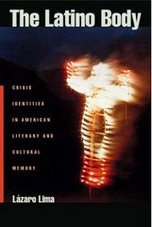Thursday, October 7, 2010
Monday, October 4, 2010
Racial predatory loans fueled U.S. housing crisis: study
Predatory lending aimed at racially segregated minority neighborhoods led to mass foreclosures that fueled the U.S. housing crisis, according to a new study published in the American Sociological Review.
Predatory lending typically refers to loans that carry unreasonable fees, interest rates and payment requirements.
Poorer minority areas became a focus of these practices in the 1990s with the growth of mortgage-backed securities, which enabled lenders to pool low- and high-risk loans to sell on the secondary market, Professor Douglas Massey of the Woodrow Wilson School of Public and International Affairs at Princeton University and PhD candidate Jacob Rugh, said in their study.
The financial institutions likely to be found in minority areas tended to be predatory -- pawn shops, payday lenders and check cashing services that "charge high fees and usurious rates of interest," they said in the study.
"By definition, segregation creates minority dominant neighborhoods, which, given the legacy of redlining and institutional discrimination, continue to be underserved by mainstream financial institutions," the study says.
Redlining is the practice of denying or increasing the cost of services, such as banking and insurance, to residents in specific areas, often based on race.
The U.S. economy is still struggling with the effects of its longest recession since the 1930s, which was triggered in large part by the housing crisis, which was in part triggered by the crash of the subprime loan market.
Subprime lending refers to loans made to consumers with poor credit and others considered higher risk. They tend to have a higher interest rate than traditional loans.
The study, which used data from the 100 largest U.S. metropolitan areas, found that living in a predominantly African-American area, and to a lesser extent Hispanic area, were "powerful predictors of foreclosures" in the nation.
Even African-Americans with similar credit profiles and down-payment ratios to white borrowers were more likely to receive subprime loans, according to the study.
"As a result, from 1993 to 2000, the share of subprime mortgages going to households in minority neighborhoods rose from 2 to 18 percent," Massey and Rugh said.
They said the U.S. Civil Rights Act should be amended to create mechanisms that would uncover discrimination and penalize those who discriminated against minority borrowers.
The study is published in the October issue of the journal.
(Editing by Paul Simao)
Predatory lending typically refers to loans that carry unreasonable fees, interest rates and payment requirements.
Poorer minority areas became a focus of these practices in the 1990s with the growth of mortgage-backed securities, which enabled lenders to pool low- and high-risk loans to sell on the secondary market, Professor Douglas Massey of the Woodrow Wilson School of Public and International Affairs at Princeton University and PhD candidate Jacob Rugh, said in their study.
The financial institutions likely to be found in minority areas tended to be predatory -- pawn shops, payday lenders and check cashing services that "charge high fees and usurious rates of interest," they said in the study.
"By definition, segregation creates minority dominant neighborhoods, which, given the legacy of redlining and institutional discrimination, continue to be underserved by mainstream financial institutions," the study says.
Redlining is the practice of denying or increasing the cost of services, such as banking and insurance, to residents in specific areas, often based on race.
The U.S. economy is still struggling with the effects of its longest recession since the 1930s, which was triggered in large part by the housing crisis, which was in part triggered by the crash of the subprime loan market.
Subprime lending refers to loans made to consumers with poor credit and others considered higher risk. They tend to have a higher interest rate than traditional loans.
The study, which used data from the 100 largest U.S. metropolitan areas, found that living in a predominantly African-American area, and to a lesser extent Hispanic area, were "powerful predictors of foreclosures" in the nation.
Even African-Americans with similar credit profiles and down-payment ratios to white borrowers were more likely to receive subprime loans, according to the study.
"As a result, from 1993 to 2000, the share of subprime mortgages going to households in minority neighborhoods rose from 2 to 18 percent," Massey and Rugh said.
They said the U.S. Civil Rights Act should be amended to create mechanisms that would uncover discrimination and penalize those who discriminated against minority borrowers.
The study is published in the October issue of the journal.
(Editing by Paul Simao)
Subscribe to:
Comments (Atom)

